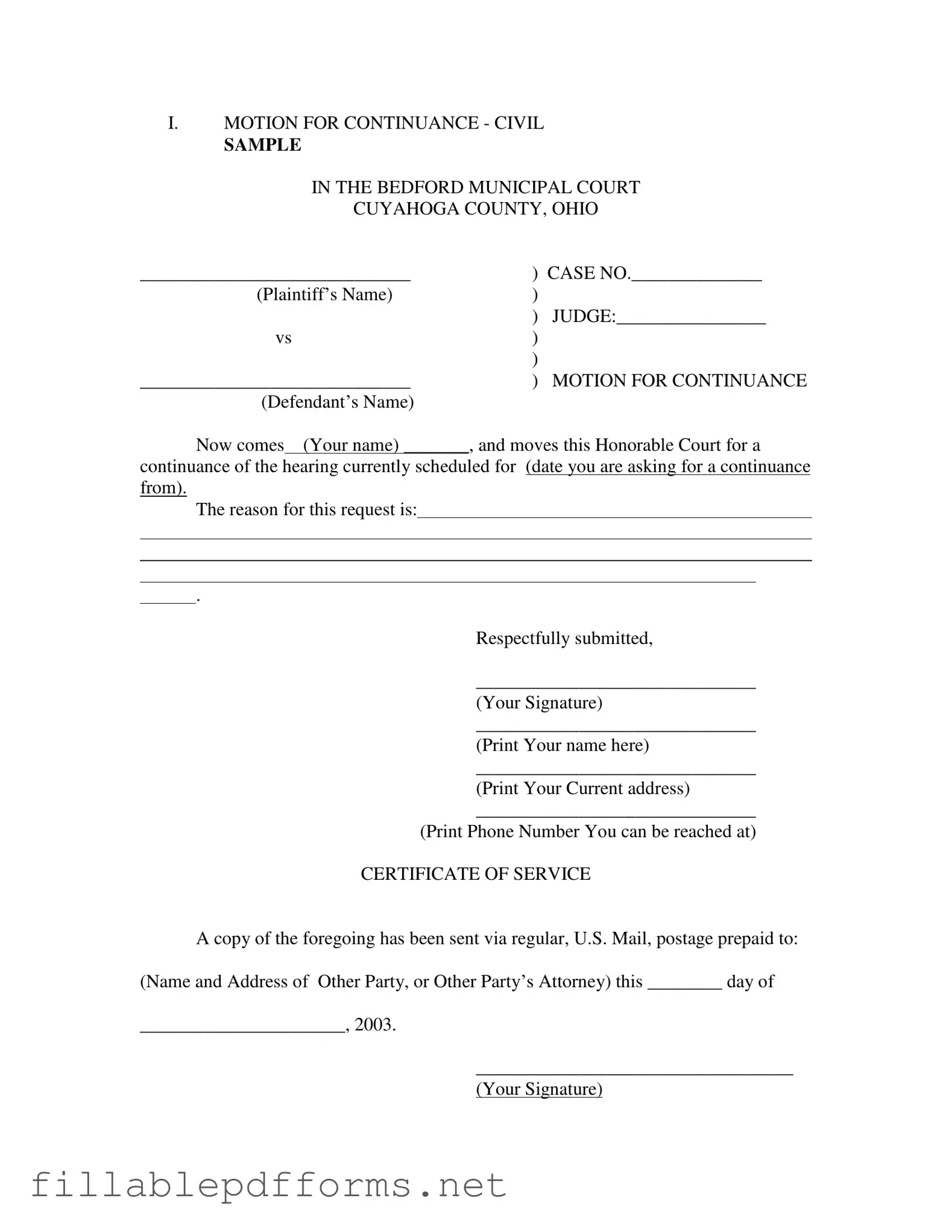The Motion for Continuance form is a crucial document used in civil cases, particularly in the Bedford Municipal Court in Cuyahoga County, Ohio. This form allows a party involved in a case to request a delay for a scheduled hearing. It includes essential information such as the case number, names of the plaintiff and defendant, and the date of the hearing that is being postponed. The individual filing the motion must clearly state their name and provide a valid reason for the request. This ensures that the court understands the necessity of the delay. Additionally, the form requires the signature of the person submitting it, along with their printed name, current address, and contact number. Another important aspect is the Certificate of Service, which confirms that a copy of the motion has been sent to the other party or their attorney, ensuring transparency in the legal process. Completing this form accurately is vital for maintaining the integrity of the case and respecting the court's procedures.
